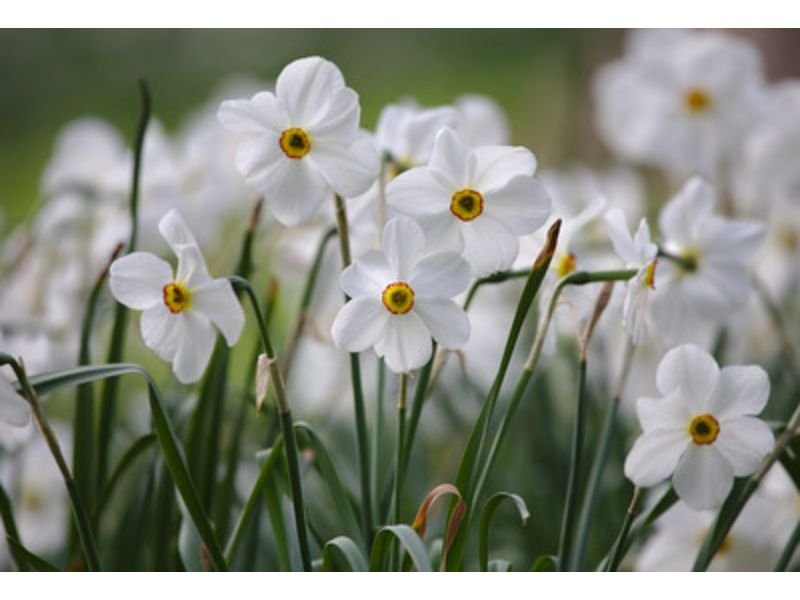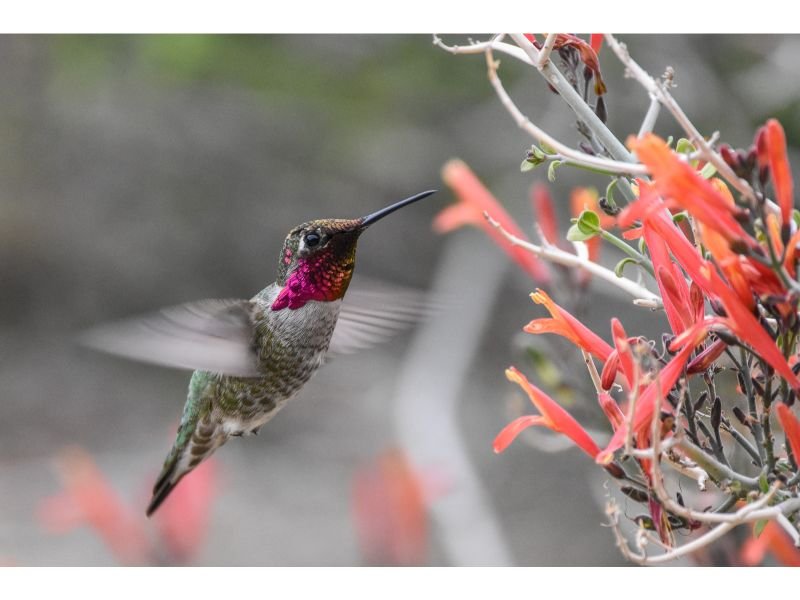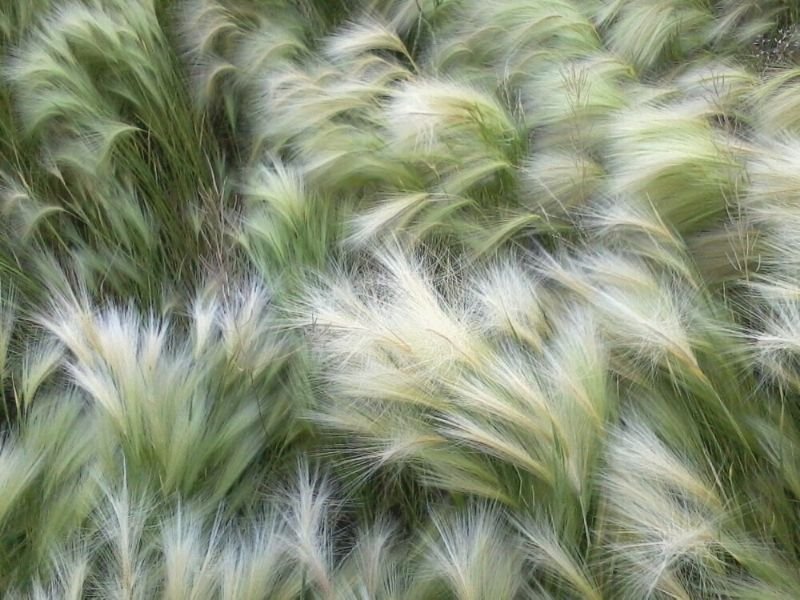White coneflower and its varieties are equally breathtaking as the classic purple one. They create a soothing and serene atmosphere and could be the best fit for those who are planning to make a stunning monochromatic garden. What’s more, white coneflower provides a source of nectar and pollen, promoting biodiversity and supporting the ecosystem. Let’s get closer to our favorite white coneflower varieties that would not disappoint!

Table of Contents
Popular White Echinacea Cultivars
White Swan (Echinacea purpurea ‘White Swan’)

Gardening Zones: 3 to 9
Height: 2 to 3 feet (60 to 90 centimeters)
Blooming Time: Late summer
With droopy petals that are as white as a swan’s feathers, this white echinacea variety would lend an air of elegance to any garden landscape. The white swan is a full-sun lover, this plant needs at least 6 hours of direct but filtered light each day to maintain its impressive white blooms. This plant also makes an excellent cut flower that with proper maintenance and temperature, can last anywhere from 5 days to a week.
Fragrant Angel (Echinacea ‘Fragrant Angel’)
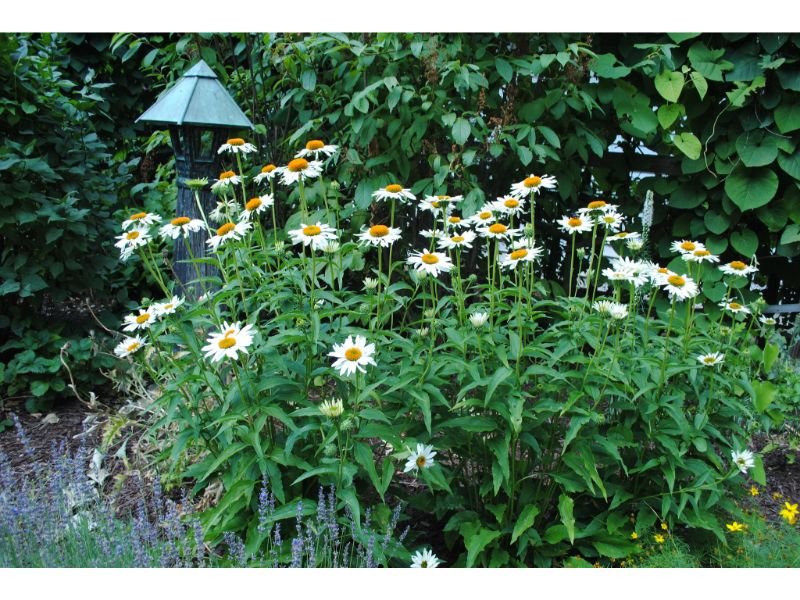
Gardening Zones: 4 to 9
Height: 2.3 to 3 feet (70 to 90 centimeters)
Blooming Time: Early summer
Aside from its milky white petals and prominent dark orange-green centers, the fragrant angel, as the name suggests, is also known for its sweet and pleasant scent. This white coneflower variety is a charming drought-tolerant plant once established and thrives well under bright, full sun to partial shade. Fragrant angel is prone to root rot if their soil is kept waterlogged, but keeping the soil consistently moist is crucial for the plant’s growth.
Coconut Lime (Echinacea purpurea ‘Coconut Lime’)
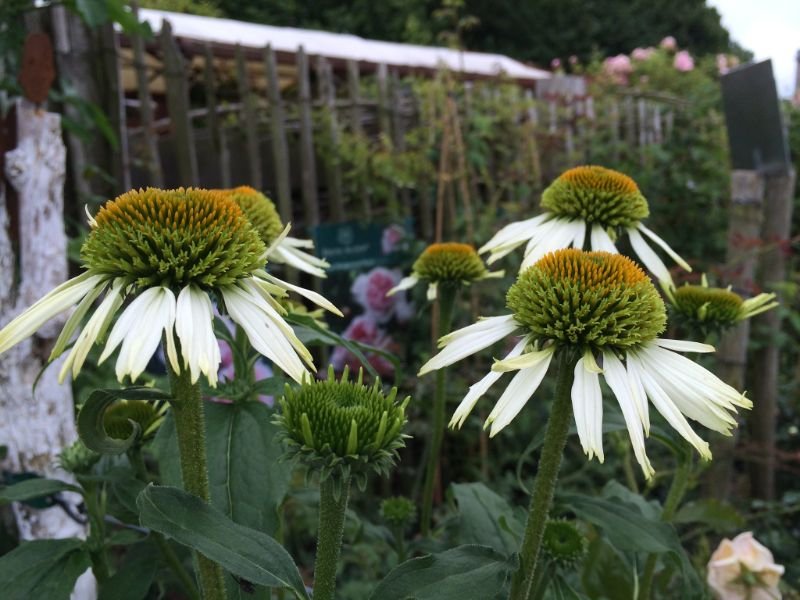
Gardening Zones: 5 to 8
Height: 1.5 to 2 feet (45 to 60 centimeters)
Blooming Time: Midsummer
The distinctive petal formation and coloration that resembles a tropical blend of coconut and lime set coconut lime apart from any other varieties of white coneflower. This extraordinary perennial features dense and lush double-layered pale lime-green cones with dark tan centers, along with droopy petals that are as white as a coconut’s flesh. Coconut lime has a compact growth habit and is highly suitable for space-limited gardens.
PowPow White (Echinacea purpurea ‘PowPow White’)
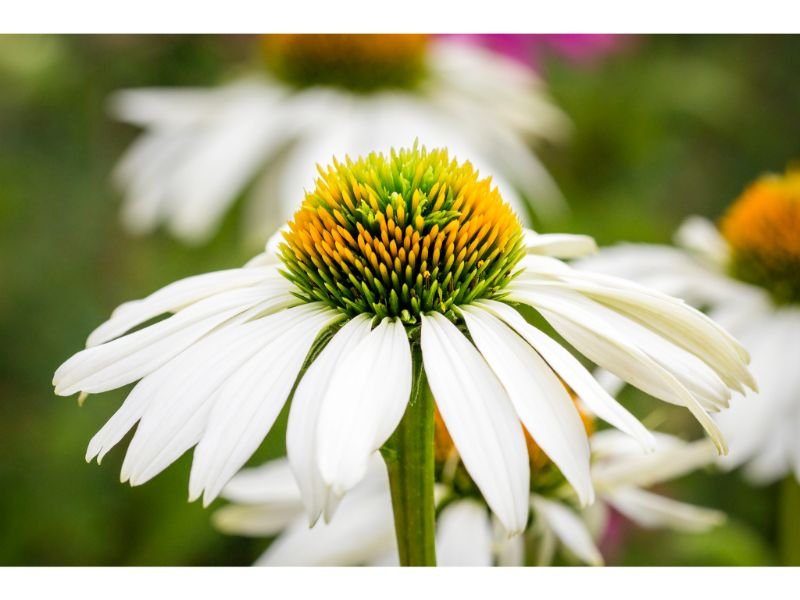
Gardening Zones: 4 to 8
Height: 2 to 3 feet (60 to 90 centimeters)
Blooming Time: Late spring
PowPow White echinacea stuns with its droopy pure single-set white petals and protruding golden-tan and dark green centers. This variety prefers sandy or loamy, nutrient-rich soil that is well-draining. It has an extended period of blooming that sometimes could last before the start of winter. PowPow White can be susceptible to powdery mildew, a fungal disease that appears like a powdery coating on the leaves stems, and even the flowering part, so ensure good air circulation.
Milkshake (Echinacea purpurea ‘Milkshake’)

Gardening Zones: 4 to 9
Height: 2.5 to 3 feet (76 to 90 centimeters)
Blooming Time: Early summer
This unique white echinacea cultivar shares a similar flower arrangement with its cousin, coconut lime, but with creamy white, double-layered cones rather than lime-green. Milkshake coneflower is attractive to pollinators like bees and butterflies, thanks to their fascinating inflorescent and color, and better thrive under bright and direct sun. They need regular watering during the first stages of growth but fairly drought-tolerance once matures.
Prairie Splendor Compact White (Echinacea purpurea ‘Prairie Splendor Compact White’)

Gardening Zones: 3 to 9
Height: 1.25 to 1.5 feet (38 to 45 centimeters)
Blooming Time: Early spring
Prairie Splendor compact white is one of the smallest white coneflower varieties out there with a unique petal coloration. The daisy-like petals of this direct sun and partial shade-loving plant are milky white with dark matcha-green tips that create such an eye-catching look. Although compact and seems hassle-free, prairie splendor compact white is still susceptible to various illnesses–including aster yellows, a disease caused by a phytoplasma.
Snow Cone (Echinacea ‘Snow Cone’)

Gardening Zones: 4 to 8
Height: 1.5 to 2 feet (45 to 60 centimeters)
Blooming Time: Midsummer
The droopy pure white petals of the snow cone look as if the white echinacea plant forming a vanilla-flavored ice cream cone! This pollinator-attractor features a prominent, almost pom-pom-like center in a dark chartreuse hue. Although nicknamed a ‘snow cone’, this dwarf variety of echinacea is a big fan of sunny locations with permeable soil, where they could provide their plant parents with endless alluring blooms.
Virgin (Echinacea purpurea ‘Virgin’)
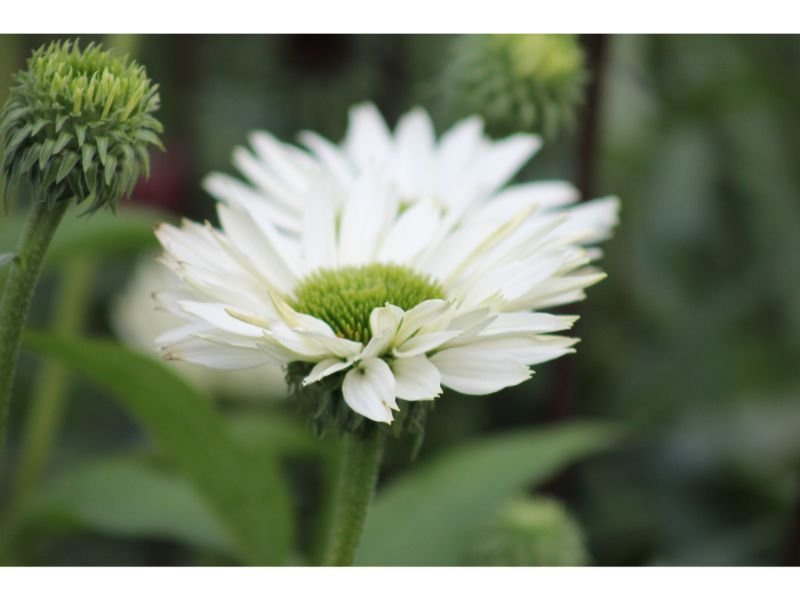
Gardening Zones: 4 to 8
Height: 1.5 to 2 feet (45 to 60 centimeters)
Blooming Time: Late spring
This charismatic white coneflower cultivar has the most aster-looking appearance outside the others. Virgin echinacea amazes with pristine white petals and a matcha-green center that creates such a wonderful color contrast. This plant doesn’t need much pruning, which means more time-saving for gardeners, however, removing spent blooms encourages additional flower growth and could help extend the blooming season.
Meringue (Echinacea purpurea ‘Meringue’)
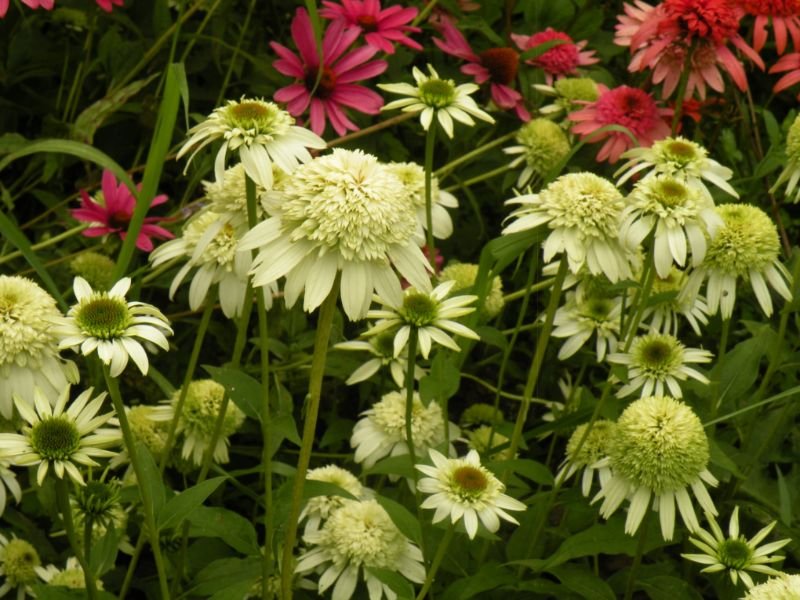
Gardening Zones: 5 to 9
Height: 1.5 to 1.8 feet (45 to 54 centimeters)
Blooming Time: Early summer
Meringue is a dwarf white coneflower cultivar that is often confused with coconut lime and milkshake varieties, due to the same flower arrangement. The key to successfully differentiating these three is by looking at the cones’ color. Coconut lime, as the name indicates, has lime-green cones and dark tan centers, while milkshake presents milky white cones but with the same center color as coconut lime. Meringue, on the other hand, grows in pale lime-green cones with dark matcha–colored spots in the middle.
White Lustre (Echinacea purpurea ‘White Lustre’)
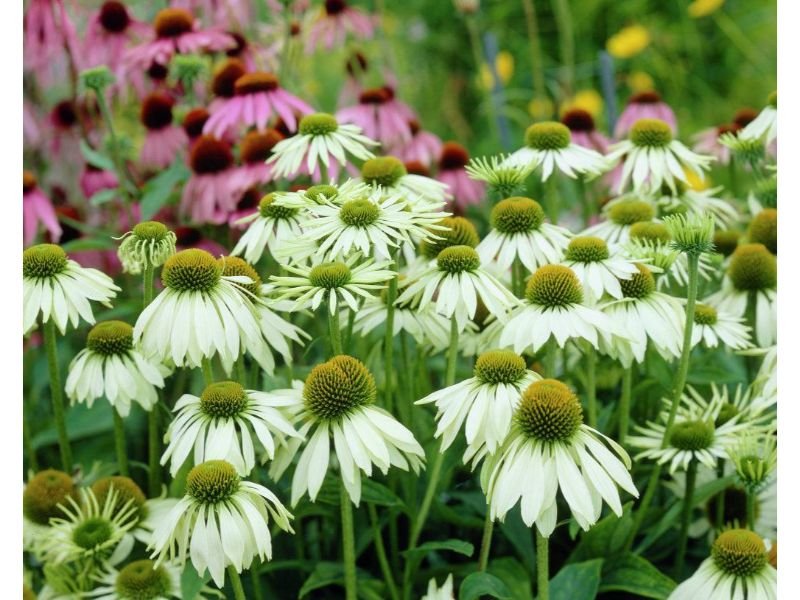
Gardening Zones: 4 to 8
Height: 2.5 to 3 feet (76 to 90 centimeters)
Blooming Time: Midsummer
White luster exhibits single-set bright white, slightly droopy petals with protruding dark golden-green or dark yellow-green centers. It performs best under bright, direct sun or partial shade, and craves porous soil with a high organic matter. White luster, similar to its white coneflower counterparts, requires regular and deep watering about once or twice a week, as they need the soil to be kept moist but slightly dry between waterings.
Which White Coneflower Variety Is the Most Fragrant?
Among these fabulous white echinacea cultivars, the fragrant angel (Echinacea ‘Fragrant Angel’) is often regarded as the most fragrant, making it the best pick for plant lovers who are seeking pleasant-smelled flowers. The other variety, although generally not producing any particular aroma, is still worth considering growing and is no less attractive for pollinators!
Do White Coneflower Varieties Need Different Types of Soil and pH Levels?
The good thing is, white coneflower cultivars are no different than any other type of coneflower when it comes to soil and pH level. Generally, white coneflowers thrive in well-draining soil that is rich in humus, ensuring the pH level is ranging anywhere from neutral to slightly alkaline (6.0 to 7.0), and that’s it!
Which White Coneflower Varieties Are the Easiest to Grow for Beginners?
White coneflowers are known for their ease of cultivation, so all types of it are particularly beginner-friendly! However, you still need to check on how much-growing space you can provide for the plant. Remember, there are taller white coneflower varieties, such as white swan and pow-pow white, that might spread and require more growing area than the dwarf varieties.
Closing Thoughts
White coneflower varieties come in a wide range of sizes, color markings, and floral arrangements that surely are captivating enough for plant enthusiasts. With their ability to attract pollinators and generally being a hassle-free plant that grows best in full to partial shade, nutrient-rich, and moist neutral to alkaline soil, there’s no way you can resist the beauty of white coneflowers!

New author in the hood. Loves gardening and flowers are my spirit animals (yes I know they are not animals but I insist). I will be covering most of the flowers’ topics here and occasionally random though as well.

